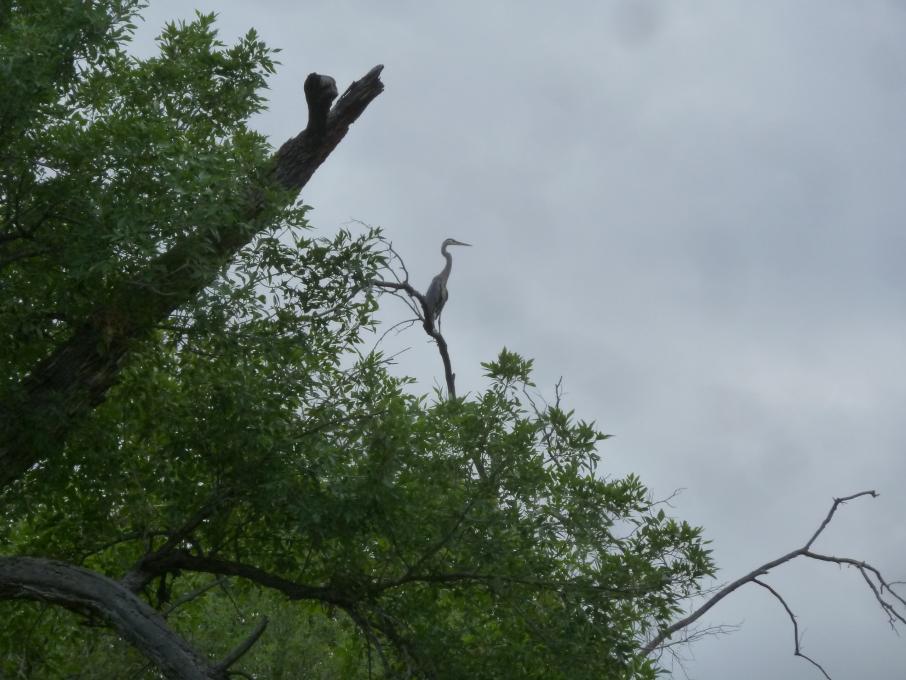Ann
Forum Replies Created
Viewing 16 posts - 1 through 16 (of 16 total)
-
AnnParticipantThank you for this excellent course. I can talk more intelligently to the visitors coming to our BC Heritage Park in Black Canyon City, AZ - a birding destination that has an Ebird spot. I also am paying more attention to the birds at my home. Thank you so much.
 in reply to: Activities: Helping Birds in Your World #740072
in reply to: Activities: Helping Birds in Your World #740072 -
AnnParticipantthanks for a great picturein reply to: Activities: Keeping Track of Your Birdwatching #740070
-
AnnParticipantThe picture below after this shows the quail at our feeder. We thought they were only this organized when they had their babies but some groups remain this organized. Some are more free for all like this one.
 in reply to: Activities: Noticing Behaviors #740064
in reply to: Activities: Noticing Behaviors #740064 -
AnnParticipant
 in reply to: Activities: Noticing Behaviors #740063
in reply to: Activities: Noticing Behaviors #740063 -
AnnParticipantActivity 2: Three species that are year-round residents Phainopepla, Verdin, and Cactus Wren. I see two of them regularly but I need to look more for the Verdin. Three that only live in your area for part of the year · Canyon wren – I seen them but had not paid attention to the fact that they are here only sometimes (M, A, M and then late June-July and Nov-Dec). I had no idea that they skipped around like that. · Black Throated Sparrow – almost all year round but appears to take a short break late June. I think this may be an error in the map since it does correspond to anything on the range maps. · The White wing Done leaves for a bit in the winter too – longer than the ap shows at my house. They were gone from early December to April 18 this year. · The turkey vulture is here most of the year (again gone a bit more at our property but close to what the ap shows). We 1st saw them this year March 19.in reply to: Activities: Different Seasons, Different Birds #710222
-
AnnParticipantNorthern Cardinal with Blackburnian Warbler Northern Cardinal has few changes … some increase to the north in the summer. However the Blackburnian Warbler has a complete change from S. America to N. America. Scarlet Tanager with Western Tanager Scarlet Tanager has most breeding in the N central to east of the US while spends the non-breeding perion in north eastern S. America. Breeding season os longer than the Western Tanager (Jun 7 - Aug 17 versus Jun 21 - Jul 6). Western Tanager is similar is that it breeds in the north (US/Canada) and non-breeding in the south (mostly central America) but very little overlap with the Scarlet Tanager. Ruby-throated Hummingbird with Rufous Hummingbird Similar comments to the Scarlet Tanager with Western Tanager on the pattern north to south. Although separate ranges for breeding, the Ruby-throated hummingbird Non-breeding season Dec 7 - Mar 8 in Central American overlaps with the Rufous Hummingbird non-breeding season which is Oct 26 - Feb 8 Sandhill Crane with Yellow-bellied Flycatcher The Sandhill Crane spends some non-breeding (pre-post too) in Mexico but more north of there. The Yellow-bellied Flycatcher non breeding is all in south Mexico and central America. The Sandhill also ranges further north but not as far east.in reply to: Activities: Different Seasons, Different Birds #710205
-
AnnParticipantActivity 2 and 3 - Use Merlin’s “Most Likely” species feature to find out what birds you are likely to see locally today. Interesting to explore this. Using range maps or bar charts, find five birds that pass through your area that you didn’t know about. I'm looking for the Hooded Oriole more now; 2 friends of mine have them on their property. One built an incredible next on the underside of a palm frond! We do see the European startling - not my favorite bird as they are not native and seem to be bullies. We have see the brown headed Cowbird - I see that we have 2 types of cowbirds; I had thought there was only 1 type. This hawk shows up in the spring - not seen him/her since it got hot
 in reply to: Activities: Local Bird Exploration #710121
in reply to: Activities: Local Bird Exploration #710121 -
AnnParticipantActivity 2 and 3 - Use Merlin’s “Most Likely” species feature to find out what birds you are likely to see locally today. Interesting to explore this. Using range maps or bar charts, find five birds that pass through your area that you didn’t know about. I'm looking for the Hooded Oriole more now; 2 friends of mine have them on their property. One built an incredible next on the underside of a palm frond! We do see the European startling - not my favorite bird as they are not native and seem to be bullies. We have see the brown headed Cowbird - I see that we have 2 types of cowbirds; I had thought there was only 1 type.in reply to: Activities: Local Bird Exploration #710117
-
AnnParticipantActivity 1: I have 2 places I watch - both on our property. We have a "bird feeding" area where we put some seeds on the ground, some seeds in a feeder, and hummingbird food in a hummingbird feeder. We watch in primarily in the morning (only time we put the seeds out). On the ground, we have mainly have morning doves, white wing doves (although they seem to prefer the feeder), ground doves and gambel quail (sometimes they use the hanging feeder). Cactus Wren show up but seem to be more after the bugs and stuff on the trees. Once in a while we get the Eurasian Collard Dove. We also get a fair number of house finches, sparrows (black chin, house, and I'm working on figuring out the rest), cardinals, albert's towhee, cactus wrens, and curve bill thrashers. In addition to hummingbirds (mainly Ana's), the gila woodpecker and northern flicka use that feeder; some other birds sort of use the feeder - they seem to find the slop over from the woodpecker and flicka. The picture is from our "water hole" where we have a camera. The picture shows a cardinal and one of bigger quail families (we have over a dozen families visiting the water - one group at a time). Some quail families have 2 sets of parents. Sometimes in the night photos, we see a screech owl. Not at the water hole, but we also have great horned owls, burrowing owls

 in reply to: Activities: Local Bird Exploration #710111
in reply to: Activities: Local Bird Exploration #710111 -
AnnParticipantI wish I had taken a picture. I have an update for Activity 3: Look for three different birds that are searching for food today. What are their food-finding behaviors? I always though cactus wrens just ate insects and seeds but I watch one killing and eating a small lizard. I verified with my Audubon ap that this is known - not common but occasionally. I can't find habits in Merlin .. although Merlin is great for ID.in reply to: Activities: Bird ID Practice #699893
-
AnnParticipant
@Cynthia I see him often at our home in New River since we have several trees with mistletoe (one of their favorite foods). I also see them at the Black Canyon Heritage Park in Black Canyon City - the park attracts a lot of birds.
in reply to: Activities: Exploring Birds #696466 -
AnnParticipantAll these birds below come to our feeding area - we throw some seed on the ground and put some in a feeded. We also have a hummingbird feeder. The area around the feeding area is undeveloped Sonoran desert with lots of trees and plants. Activity 1: 2 birds different just by shape. Curve bill Thrasher and Gambel Quail. The thrasher is slimmer and has a curved bill. The quail is plump and has shorter legs plus a top notch. Activity 2: 3 different birds same color but different parts of the body. These are in the grey category but quite different. Albert's Towhee a drab grayish brown all over except a bit darker face and pinkish bill that resembles a cardinal bill. The feed mostly on the ground scratching with both feet. Morning doves are grey mostly on the back - breast and belly are whitish. They also have tails more pointed than the Albert's Towhee. The Curved Bill thrasher has a grey back but the breast and belly has spots but the bill is slightly curved. Activity 3: Look for three different birds searching for food today. The Gila Woodpecker visits the seed feeder and the hummingbird feeder. We think the Gila and Northern Flicka may get more of the hummingbird food that the hummingbirds do. The also get insects off the tree trunks. The black throated sparrow tries to horn in on the doves at the feeder - they have some luck but they are very polite (no bullies). They also peck around the ground and explores the creosote in the area for insects. . The Cactus Wren rarely comes in to eat the food we put out. We see them hoping everywhere - sometimes flipping twigs and small rocks to find food. Activity 4: Favorite bird - Phainopepla. The are robin size (7-8 inches), slim with a spiky crest. The look black unless the sunlight is right and then they are really shiny (almost purple). The have red eyes. They feed on the mistletoe - some say they even plant mistletoe seeds (but maybe not on purpose). When they fly, there a white wing patch. ,in reply to: Activities: Bird ID Practice #696464
-
AnnParticipantI love the dove too - their sound welcomes me to each day. I just wish they were smarter about their nesting choices - too often the wind destroys them or they are too small for the chicks.in reply to: Activities: Exploring Birds #694337
-
AnnParticipant
 Phainopepla - this is my favorite bird. Not only is the name fun to say (took me a long time to figure that out but it really just rolls out), but it has unique flight and sound patterns (they can even imitate some other bird sounds).
This is a description I have - not sure if I compiled it or borrowed it -- The Phainopepla 16–20 cm long with a noticeable crest and a long tail; it is slender, and has an upright posture when it perches. Its bill is short and slender. The male is glossy black, and has a white wing patch that is visible when it flies; the female is plain gray and has a lighter gray wing patch. Both sexes have red eyes, but these are more noticeable in the female than the male. They build their nests mainly in mesquite trees near a mistletoe plant. Some believe that the bird actually “plants” the seeds. An individual may eat at least 1,100 mistletoe berries per day if available. in reply to: Activities: Exploring Birds #694333
Phainopepla - this is my favorite bird. Not only is the name fun to say (took me a long time to figure that out but it really just rolls out), but it has unique flight and sound patterns (they can even imitate some other bird sounds).
This is a description I have - not sure if I compiled it or borrowed it -- The Phainopepla 16–20 cm long with a noticeable crest and a long tail; it is slender, and has an upright posture when it perches. Its bill is short and slender. The male is glossy black, and has a white wing patch that is visible when it flies; the female is plain gray and has a lighter gray wing patch. Both sexes have red eyes, but these are more noticeable in the female than the male. They build their nests mainly in mesquite trees near a mistletoe plant. Some believe that the bird actually “plants” the seeds. An individual may eat at least 1,100 mistletoe berries per day if available. in reply to: Activities: Exploring Birds #694333 -
AnnParticipantBlue herons have been one of my favorites ever since I lived in Florida in the 70's. Now I enjoy them at Black Canyon Heritage Park in Arizona - we have an e-bird site -https://ebird.org/ebird/hotspot/L3604678. 98 species seen by a variety of people since 2011/
 in reply to: Activities: Exploring Birds #694132
in reply to: Activities: Exploring Birds #694132 -
AnnParticipantNorthern Cardinal - I've been told that the cardinal that we have in our Sonoran Desert is a bit different (more red and maybe smaller) than the version found in eastern US. Is it a subspecies?in reply to: Activities: Exploring Birds #693951
Viewing 16 posts - 1 through 16 (of 16 total)

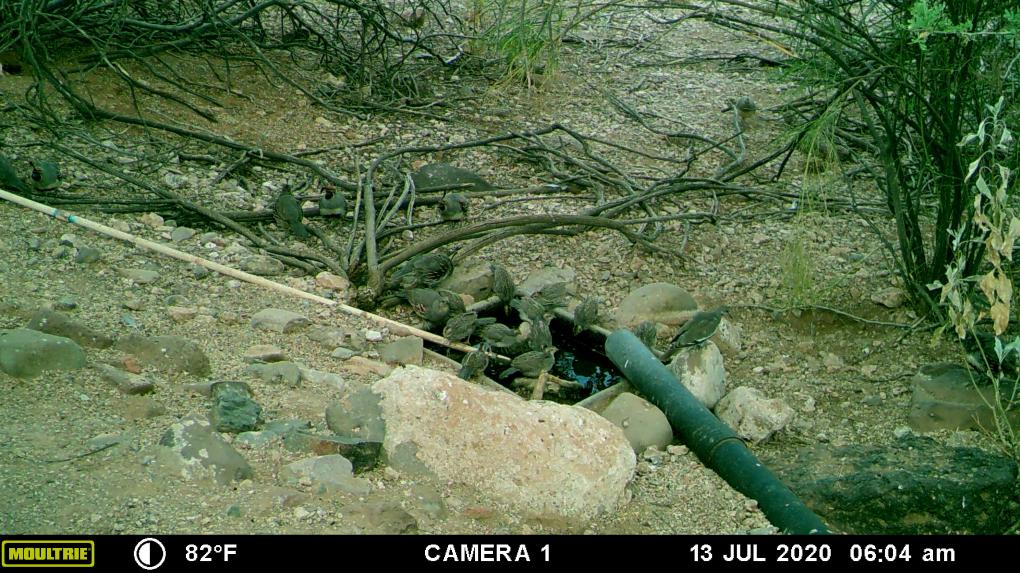
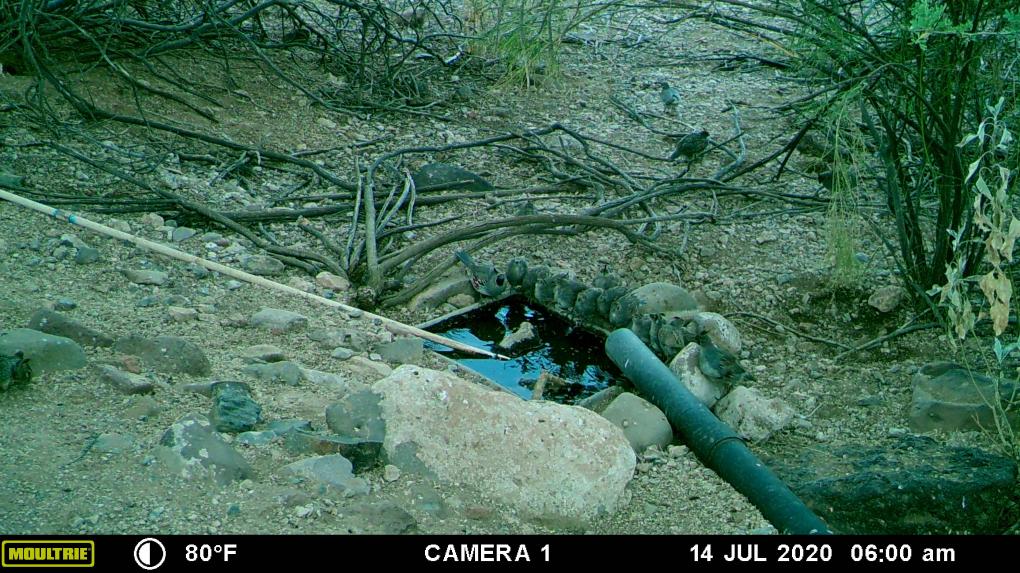
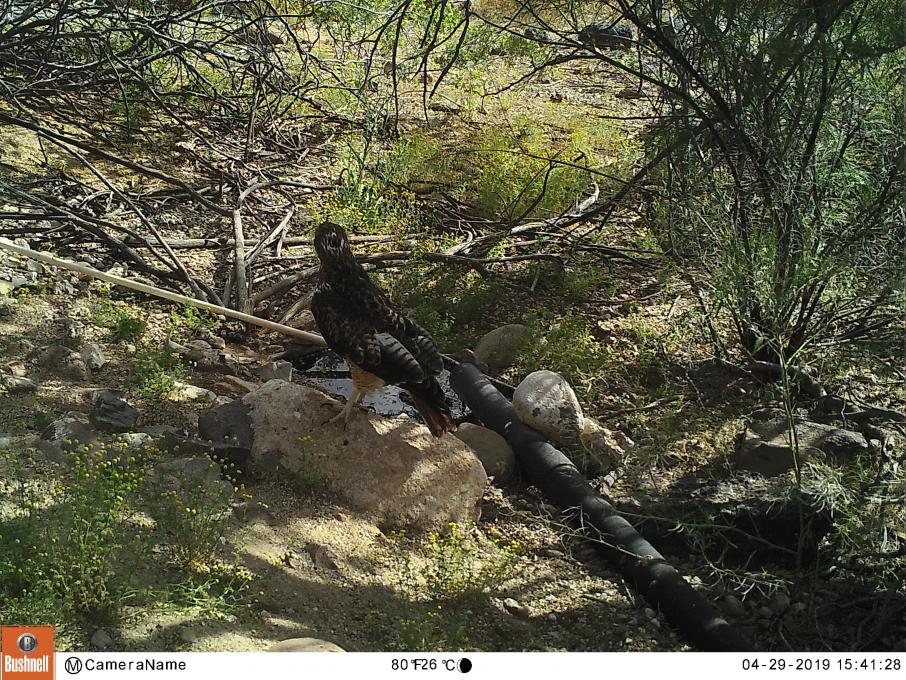
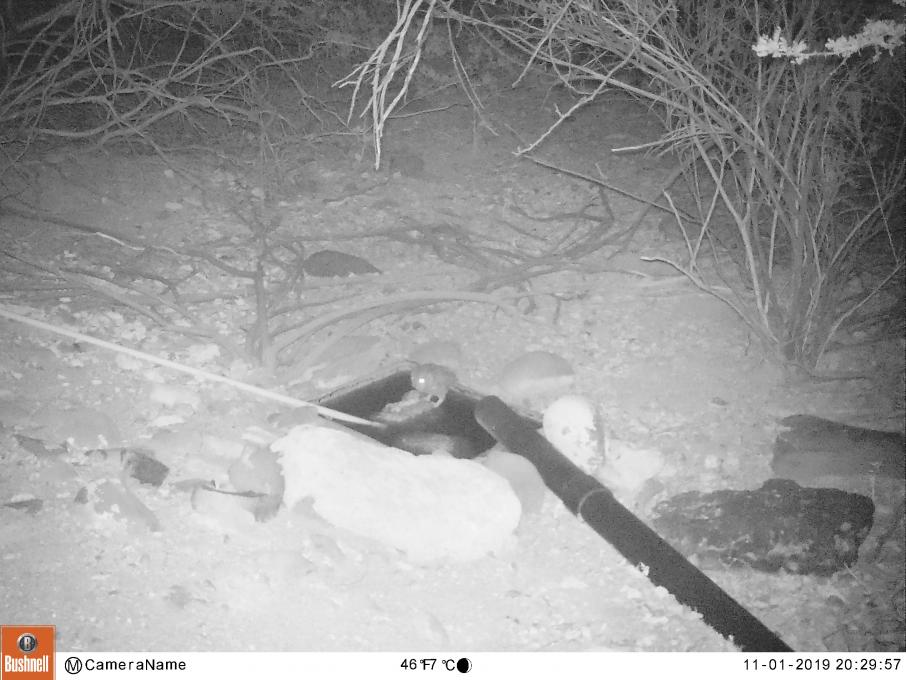
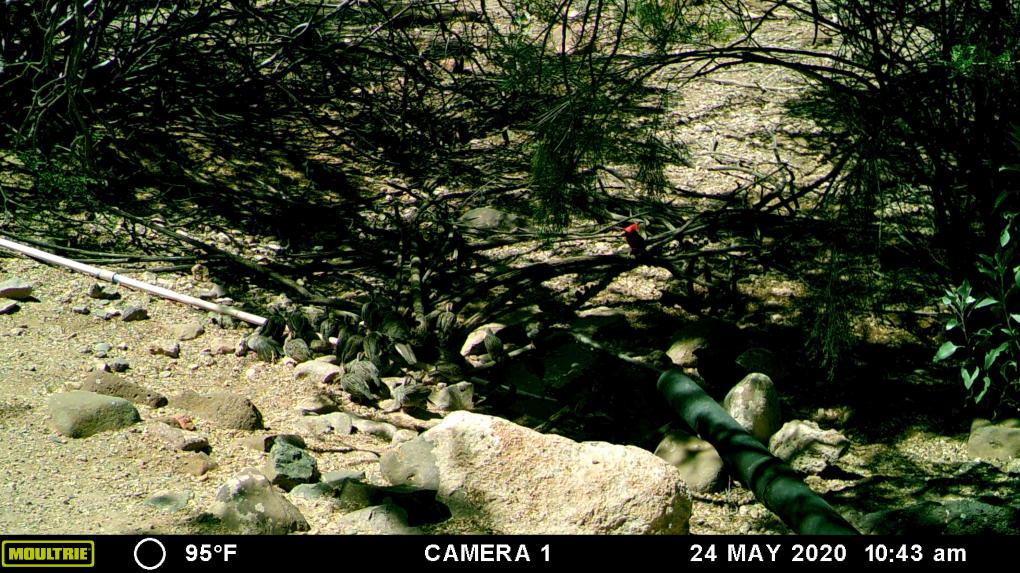
 Phainopepla - this is my favorite bird. Not only is the name fun to say (took me a long time to figure that out but it really just rolls out), but it has unique flight and sound patterns (they can even imitate some other bird sounds).
This is a description I have - not sure if I compiled it or borrowed it -- The Phainopepla 16–20 cm long with a noticeable crest and a long tail; it is slender, and has an upright posture when it perches. Its bill is short and slender. The male is glossy black, and has a white wing patch that is visible when it flies; the female is plain gray and has a lighter gray wing patch. Both sexes have red eyes, but these are more noticeable in the female than the male. They build their nests mainly in mesquite trees near a mistletoe plant. Some believe that the bird actually “plants” the seeds. An individual may eat at least 1,100 mistletoe berries per day if available.
Phainopepla - this is my favorite bird. Not only is the name fun to say (took me a long time to figure that out but it really just rolls out), but it has unique flight and sound patterns (they can even imitate some other bird sounds).
This is a description I have - not sure if I compiled it or borrowed it -- The Phainopepla 16–20 cm long with a noticeable crest and a long tail; it is slender, and has an upright posture when it perches. Its bill is short and slender. The male is glossy black, and has a white wing patch that is visible when it flies; the female is plain gray and has a lighter gray wing patch. Both sexes have red eyes, but these are more noticeable in the female than the male. They build their nests mainly in mesquite trees near a mistletoe plant. Some believe that the bird actually “plants” the seeds. An individual may eat at least 1,100 mistletoe berries per day if available. 